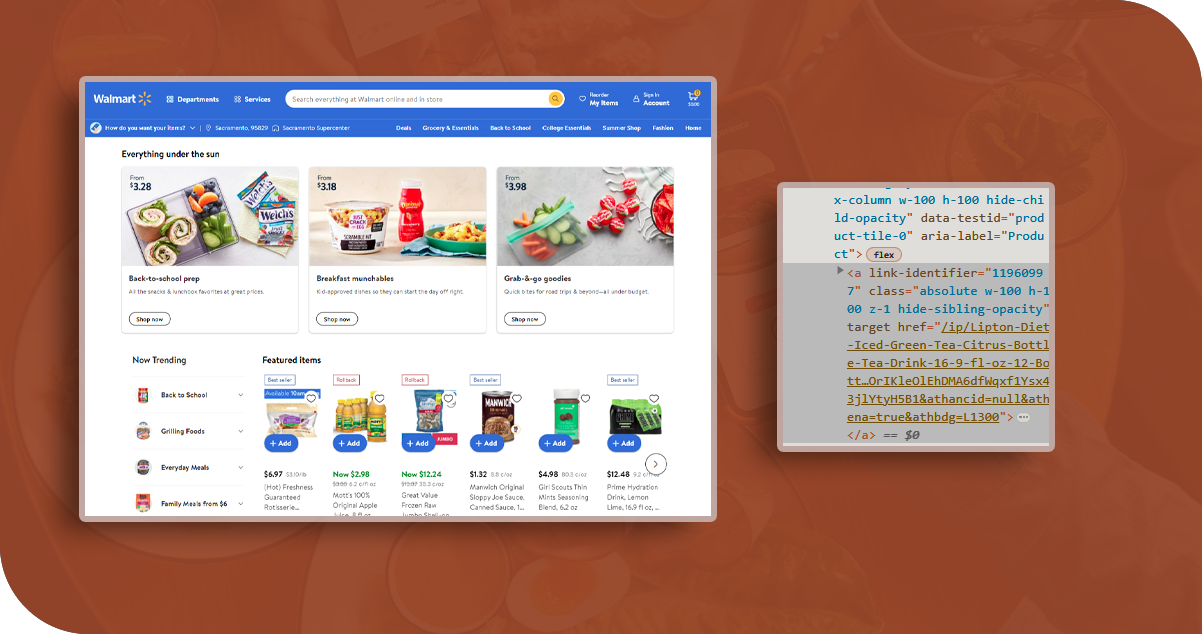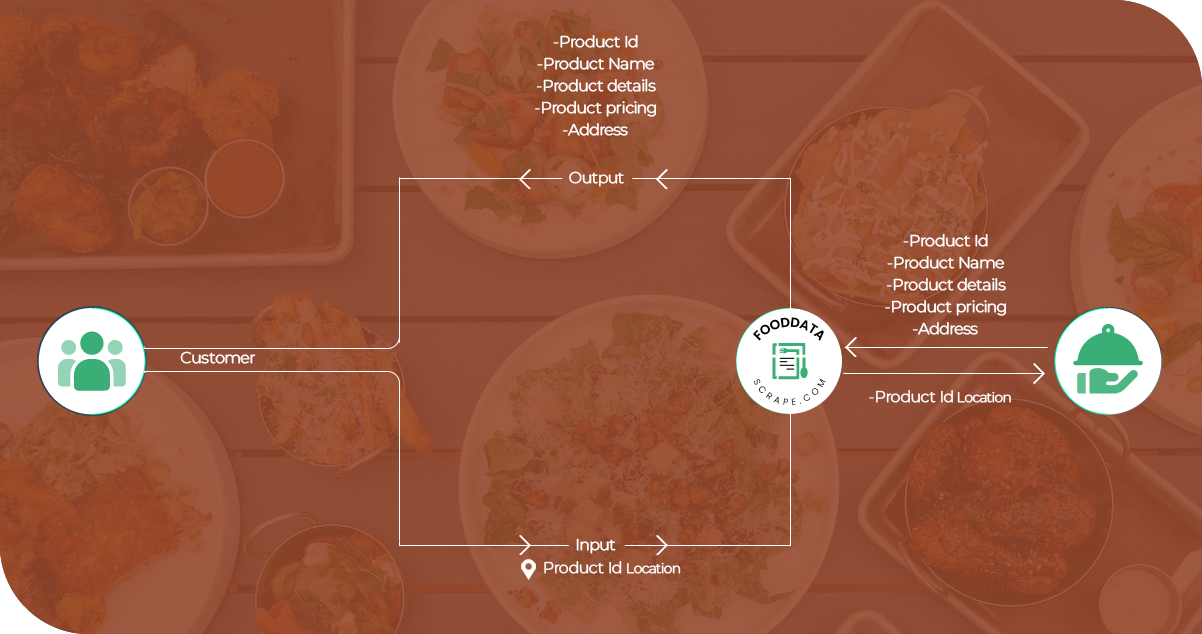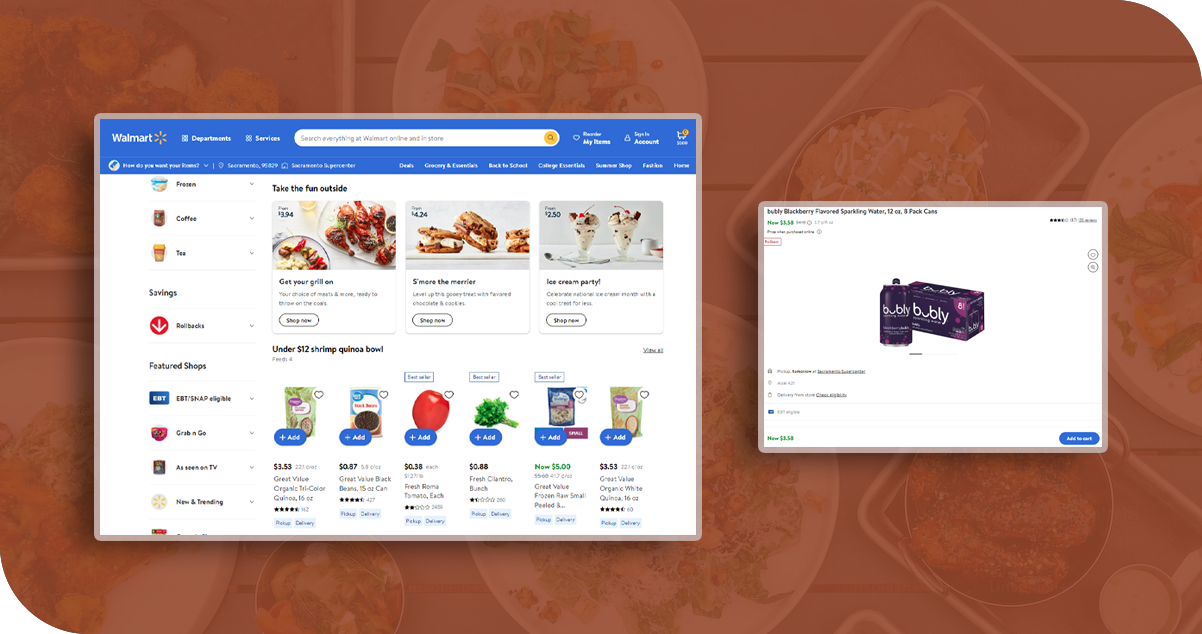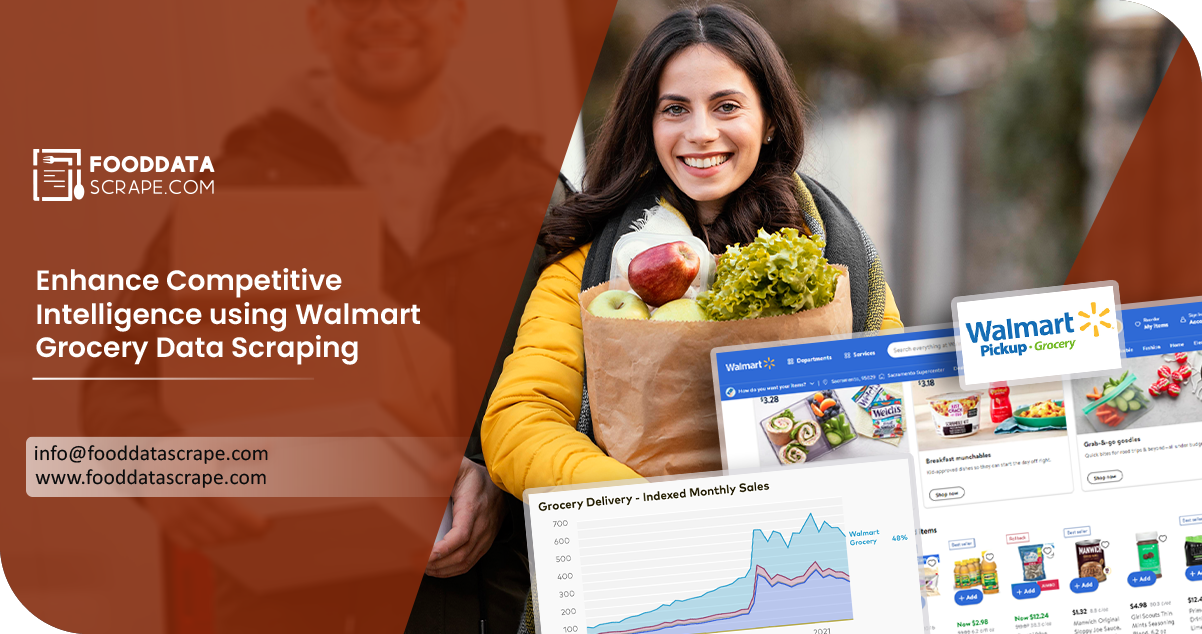The Client
Our client, a successful and popular grocery business, sought our assistance in scraping Walmart data to gain a competitive edge in the market. By leveraging our expertise in web scraping, we developed a customized solution to extract and analyze valuable information from the Walmart platform.
Key Challenges

Walmart employs various anti-scraping measures to protect its website from automated data collection. These measures may include CAPTCHAs, IP blocking, or other security mechanisms that hinder the scraping process. We had to develop strategies to bypass these measures while Walmart Grocery Data Scraping.
Walmart's website structure may change frequently, affecting the scraping process. We had to continuously monitor and adjust our scraping techniques to adapt to these structural changes and ensure accurate data extraction.
Scraping data from Walmart Grocery can result in a large volume of data to handle. We faced challenges in efficiently managing and processing the collected data, ensuring its accuracy, and structuring it in a usable format.
Ensuring the quality and consistency of data presented a challenge. We had to implement robust data validation techniques, handle data inconsistencies, and account for product listings, descriptions, and pricing variations to scrape online grocery delivery app data.
Key Solutions
We developed algorithms and techniques to bypass Walmart's anti-scraping measures, such as CAPTCHAs and IP blocking. It involved using CAPTCHA-solving services or implementing automated CAPTCHA-solving mechanisms to overcome the obstacle.
Our grocery pricing data intelligence continuously monitored and updated our scraping scripts to adapt to Walmart's dynamic website structure. We regularly checked to identify any changes in the HTML structure and modified the scraping code accordingly.
We leveraged a pool of proxies to ensure IP diversity and avoid potential IP blocking issues. Rotating proxies helped distribute requests across different IP addresses, reducing the chances of being detected as a scraper.
We optimized our data storage and processing mechanisms to handle the large volume of scraped data efficiently. It included implementing scalable databases, utilizing distributed systems, and employing parallel processing techniques to ensure efficient storage and retrieval of the collected data.
Methodologies Used

We first determined the specific information to scrape from Walmart's grocery section. It could include product details, prices, customer reviews, nutritional information, or other relevant data.
Analyze the structure of Walmart's grocery website to identify the HTML elements that contain the desired data. Inspect the page source code and identify unique identifiers, classes, or tags associated with the data elements you want to extract.
We then set up a scraping environment using a programming language like Python. Install the necessary libraries, such as BeautifulSoup or Scrapy, to facilitate the scraping process.
Then, we use programming techniques to send HTTP requests to Walmart's servers, targeting the specific web pages containing the desired data.
We then use HTML parsing libraries to parse the retrieved HTML content. It helps us navigate the document structure, locate specific data elements, and extract the desired information.
Lastly, we save the scraped data in a structured format such as CSV, JSON, or a database. Analyze the collected data to gain insights, identify trends, or use it for further processing or integration with other systems.
Advantages of Collecting Data Using Food Data Scrape

Comprehensive Market Insights: Food data Scrape can gather extensive data from various online sources, including menus, recipes, nutritional information, customer reviews, and pricing details. This comprehensive dataset provides valuable market insights, allowing businesses to understand consumer preferences, trends, and competitor strategies.
Competitive Analysis: We enabled businesses to analyze their competitors' offerings, pricing, promotions, and customer feedback. This information helps identify gaps in the market, benchmark against competitors, and develop effective strategies to stay ahead.
Pricing Optimization: Businesses can make informed pricing decisions by monitoring competitors' pricing data through scraping. They can adjust their prices dynamically to remain competitive, optimize profit margins, and attract price-sensitive customers.
Menu Development and Innovation: Accessing a wide range of food-related data through scraping helped our clients to develop and refine their menus. They can identify popular dishes, ingredients, and emerging trends, leading to menu innovation and enhanced customer satisfaction.
Customer Sentiment Analysis: Our data scraping enables businesses to gather and analyze customer reviews and feedback. This sentiment analysis helps identify areas of improvement, track customer preferences, and enhance overall customer experience.
Final Outcome: By integrating advanced scraping solutions into our client's existing infrastructure, we collected seamless data that helped them strategize their business operations and leverage huge benefits.
























































































